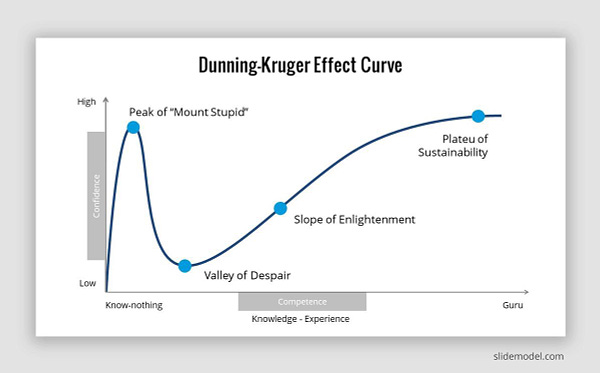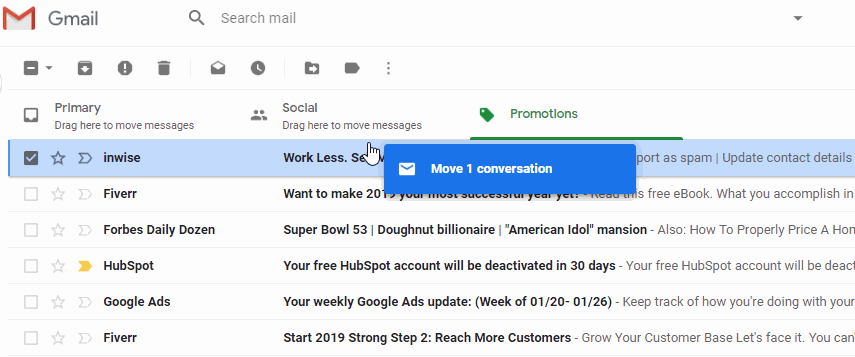I’m Ivan Landabaso, VC at JME.vc. Startup Riders is a weekly newsletter where I go down startup rabbit holes and share actionable insights. I also love surfing & BJJ 🤙
Summary
🤝 Negotiator: Key points from an FBI hostage negotiator.
👋 JME Ventures: Quick summary of what we covered on Clubhouse.
💵 Recent Deals in Spain: Wallbox, Holded, Highlight Therapeutics and more!
💭 Thinking or Reading: Hypnotic surfing and our world in data.
✉️ Don’t Miss It
If you don’t want to miss this email in the future, please drag from “Promotions” to “Primary”, just like this 👇 or add startupriders@gmail.com to your contacts 🙏
The Negotiator 🤝
I’ve always been fascinated by good negotiators.
During my first week in Silicon Valley, I witnessed my great friend Jeff Barco walk in to his gym and get himself a really good deal (the guy did this for a living at Apple & Microsoft).
I remember thinking, “there is no way this is ever going to work”. Sure enough, Jeff just stood there, asking for “something fair and reasonable”. He proceeded to do some kind of word-magic and 30 minutes later the boss man lowered his price and offered him a deal.
We then celebrated with Tacos 🌮.
Anyway, this book from FBI key hostage negotiator (Never Split The Difference) reminded me of him - here are the key take-aways:
Tl;dr — Traditional negotiating concepts are incomplete and don’t work systematically — because they ignore the actual human beings doing the negotiating. Humans are highly irrational and emotional beings who have to make decisions with incomplete knowledge — we have cognitive biases that are exploitable. The book teaches tactics on how to exploit these blindspots.
ACTIVE LISTENING
Most of the time humans are passive listeners: hearing only what we they want to hear and filtering out everything else.
We must learn to actively listen — so that they trust you, and let their guard down to share information. Write it all down, you will be missing things.
How? — You can show that you’re actively listening by not rushing them and using a calm, friendly, and upbeat speaking voice.
MIRRORING
What? — People are attracted to what’s similar, and distrustful of things that seem different. Mirroring is the act of imitating speech patterns, signaling to the other person not only that you’re hearing them, but that you’re like them too.
How? — use the last three words a person just verbalized.
TACTICAL EMPATHY & LABELS
What? —The act of understanding someone else’s position in order to get what you want from them. It entails recognizing their perspective and feelings — vocalizing it, in order to get what you want.
How? — Use labeling to defuse their fears, bringing them into the open. Labeling requires identifying and vocalizing someone else’s emotions through neutral, qualified, third-person phrases such as “It seems like you’re…” “It looks like you’re…” or “It sounds like you’re…”
ACCUSATION AUDITS
What? — A tactic used to diffuse a situation by immediately bringing all the negative points a counterpart could bring to the table upfront.
How? — Example “Hey: I completely understand if you think I’m withholding information from you, trying to confuse you, or even outright lying to you.” The counterpart will likely want to reassure you that you’re not that bad.
Get them to say NO
What? — You want them to say not, so that they feel in control (contrary to existing negotiation literature). You’re paving the way for negotiation by giving them the freedom to set their own limits.
How? — Is now a bad time to talk?”>“Do you have a few minutes to talk?”
Get them to say THAT’s RIGHT
What? — Earning a “That’s right” is a powerful tool in negotiations, they are crediting you with understanding their point of view.
How? — Summarize — Show them how much you understand their worldview through active listening and summarizing their points back to them.
Get them to say FAIR — bend their reality
What? — “fair” is the most powerful word in negotiations. To get to it, you need to bend their reality using a number of tactics.
Anchor their emotions: You need to be able to audit and acknowledge their fears. Anchoring their emotions in preparation for a loss, loss aversion is heightened, and they’ll jump at the chance to avoid it.
Let the other guy go first: Going first is not necessarily the best thing when it comes to negotiating price.
Establish a range: Establish a ballpark figure with credible references to support your statement.
Pivot to non-monetary terms: Make your offer reasonable by offering things that aren’t important to you but could be important to them.
When you talk numbers, use odd ones: feels like a figure that you came to as a result of a thoughtful calculation.
Surprise them with a gift
CALIBRATED QUESTIONS
What? — build trust and not conflict by educating the other party on what the problem is rather than telling them what the problem is.
How? —Use “How” and “What”, and not “Why”. Ex: “What about this is important to you? How can I help make this better for us? How would you like me to proceed? What is it that brought us into this situation?”
BARGAIN HARD — Ackerman Model
What? — The Ackerman Model is an offer-counteroffer method. The six-step process is:
Set your target price (your goal).
Set your first offer at 65 percent of your target price. Calculate three raises of decreasing increments (to 85, 95, and 100 percent).
Use lots of empathy and different ways of saying “No” to get the other side to counter before you increase your offer.
Use odd numbers for credibility on final number.
On your final number, throw in a non-monetary item (that they probably don’t want) to show you’re at your limit.
Find the BLACK SWAN
What? — black swan are the unknown unknowns in a negotiation, powerful leverage multipliers.
How? — Let your known-knowns guide you, but don’t let them blind you from what you don’t know. Move the discussion away from the deal, dig into worldviews / perspectives. Take the discussion away from the negotiation table and into the emotions and life of the other party. That’s where Black Swans live.
Here’s a cheat sheet summarising all of the above 👇CHEATSHEET → Great cheatsheet from Yan-David Erlich
👋 JME Ventures
Our JME Ventures team had a 30 minute experimental ☕ session on Clubhouse, here’s a summary of what went down:
We introduced the team and the JME Ventures investment strategy.
We talked about how lucky we feel to talk with entrepreneurs every day.
We explained our investment decision-making process, how we see >1000 startups/year, how our funnel works, our weekly dealflow meeting (were opportunities are debated at length) and what types of meetings we tend to have with entrepreneurs.
We talked about how the VC business works, and recommended 2 books that could help entrepreneurs looking to raise:
We were going to get into “How to spook an investor” but ran out of time 😜
If you have any feedback, please don’t hesitate to DM me on Twitter!
And if you are looking to raise, of course, please get in touch with us!💵 Recent Deals In Spain
You love startups and want to enjoy a Spanish lifestyle? Come join the Spanish startup ecosystem. Here’s a list of recently funded startups:
Wallbox (electric vehicle charging) raised €33m
Highlight Therapeutics (health) raised €22.6m
Holded (ERP for SMBs) raised a $15m
Twinco Capital (supply-chain finance) raised €3m
Payflow (salary on demand) extended raised €2m
Triditive (additive manufacturing) raised €1.49m
Aflorithmic Labs (‘Audio-as-a-Service’) raised $1.3m
Criptan (Crypto) raises 500K.
Delitbee (food discounts) raised €100k.
💭 Thinking or Reading
🏄 Hypnotic Surfing
Possibly my favorite surfer - Craig Anderson. For those not familiar with surfing, notice how extremely relaxed this guy is while taking on some pretty serious waves.
📈 Dunning-Kruger Effect Curve


💉 Lets go Humans!
We hit an important milestone this week.
If you find this interesting, please consider sharing with your friends. I’d also love to get your thoughts and feedback on Twitter. Until the next one! 😃











Big fan of the FBI approach 👌🏻 If you haven't watched Mindhunter on Netflix, do it asap ☺️